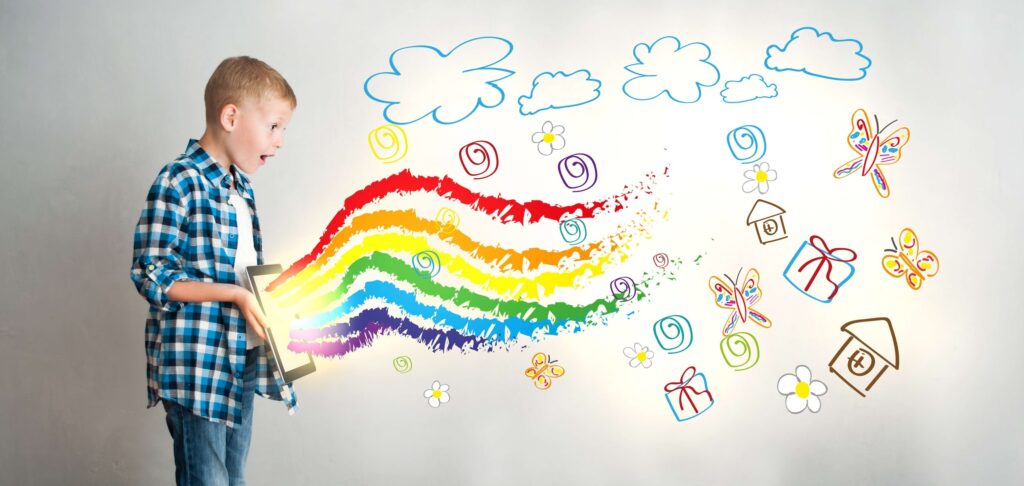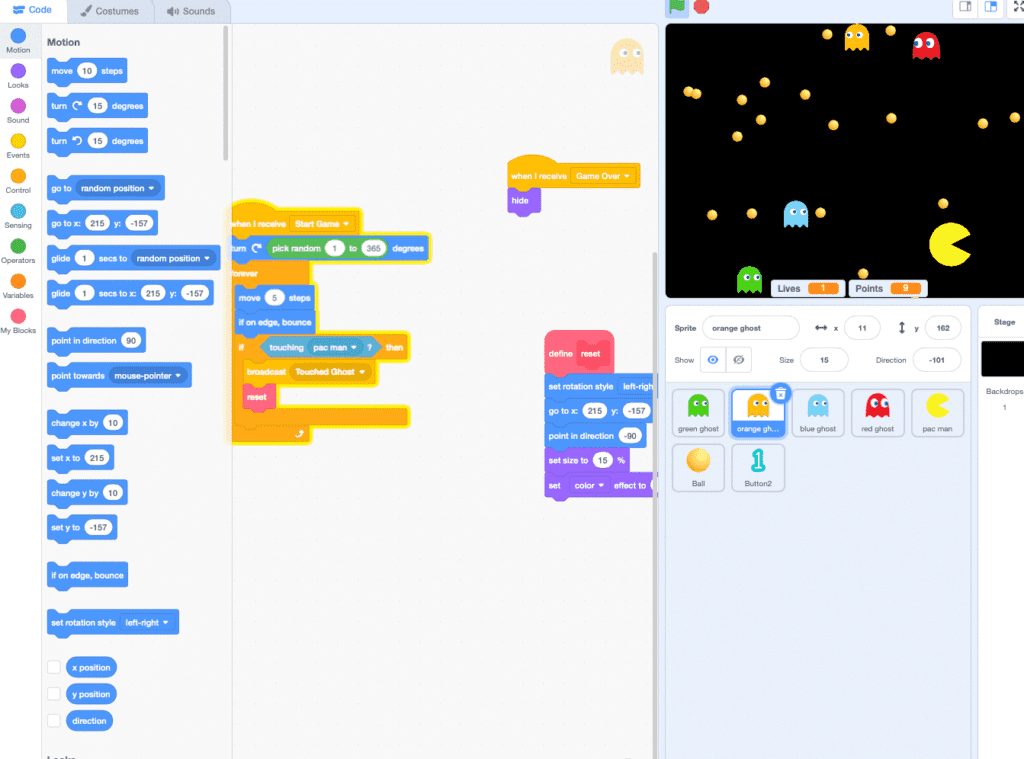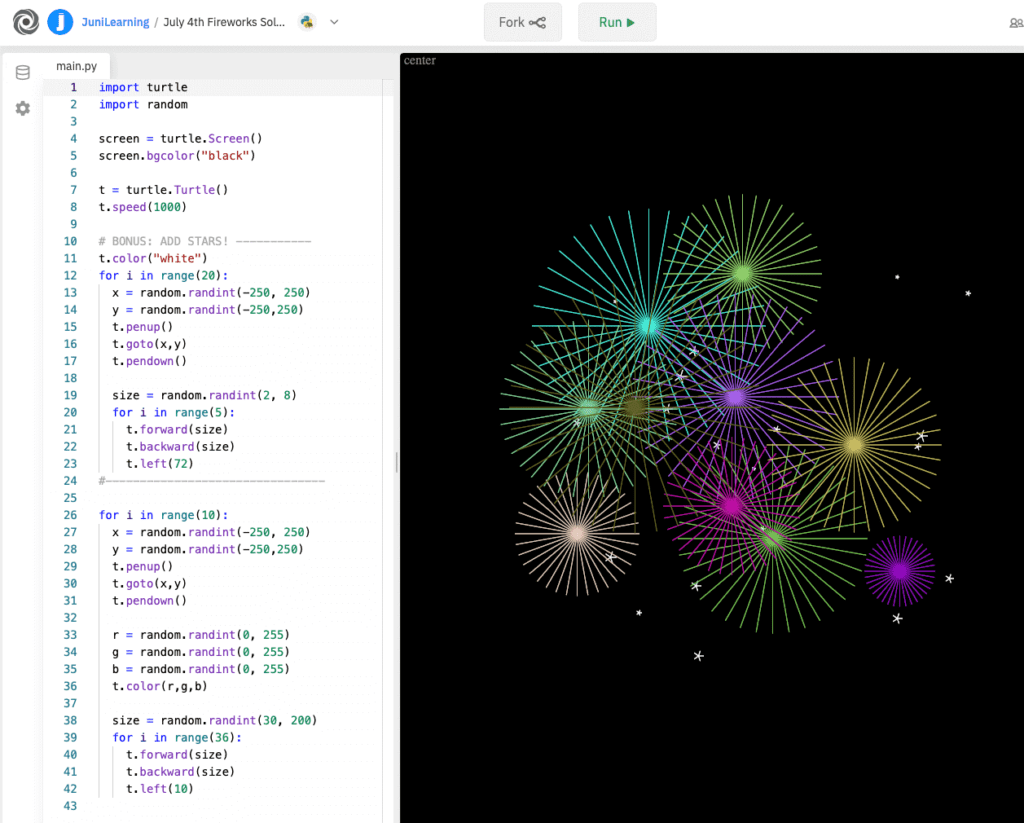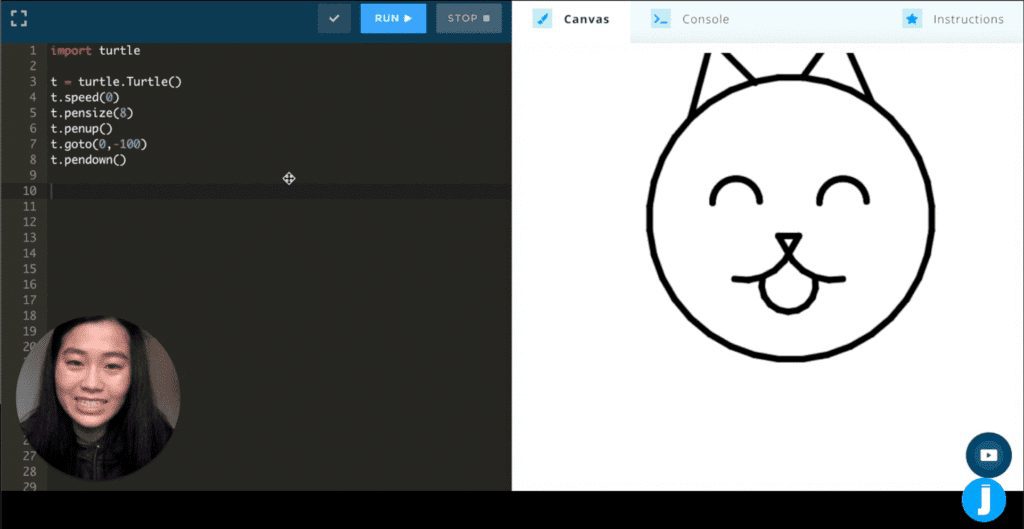Getting Started
There are several reasons why every kid should learn to code — for instance, coding fosters creativity and enhances problem-solving skills. Fortunately, teaching kids to code doesn’t have to be difficult, and you don’t need any coding experience. Juni Learning is here with a guide to get you started.
Are you ready to put your student on the path to becoming a coder? Let’s do it!
Step 1: Find Their Passion

Connecting coding to what kids are passionate about helps them stay engaged and interested.
Kids love learning how things work — especially things they’re passionate about! You can use this to make coding a fun and engaging experience for any age group. Take the hobbies and interests that they already have, combine it with their natural curiosity, and find a way to connect it to a coding project. These hobbies provide a familiar pathway for connecting computer science to the real world.
Are they…
- Gamers? Start them on the path to coding games and building Minecraft add-ons.
- Interested in art? Try a more design-focused coding project.
- Fascinated by the web? They can work toward creating web pages using HTML/CSS and Javascript.
Step 2: Pick a Visual Coding Language
Once you know what interests your student, you’re ready to take the next step and pick a programming language for them to learn with. We offer an extensive look at the best programming languages for kids that will help with this process.
The primary point from that article that is worth reiterating here is this: pick a language that offers a visual component. Most children don’t learn purely from words on a page or screen, which is why the best textbooks include visuals. Visual learning is also a critical part of coding for kids. Fortunately, computer programming is no longer just about looking at lines of code.

A Pac-Man game created in Scratch coding. Scratch allows kids to visually create their favorite games, and use colorful code blocks to control characters!
Not only can kids see the output on their favorite Apple (iPad, iPhone) or Android device — even the coding process itself can be made visual! Coding becomes much more concrete when your student can see the effect of a change they make playing out on the screen in front of them (a turtle moving forward or the color of a background changing).
For younger kids (8-11 year-old), block-based coding languages like MIT’s Scratch platform have great visual appeal, introducing coding much the same way as legos introduce engineering. For older kids 11+, you can add visual elements to the Python language using the Turtle library.
Step 3: Choose a Simple Starter Project
A child’s first painting won’t be the Mona Lisa, and their first coding project won’t be a state-of-the-art video game. And that’s okay. When teaching coding, use simple projects as a starting point and progressively build to more and more complicated tasks as their coding skills advance.
A kid may want to make the next great Minecraft add-on, and that is a great goal to have! Let this motivate them, but don’t let the inability to do it on day one dismay them. Start them off with learning basic design and problem-solving and help them understand how this will lead to their eventual goal. Simple projects let an hour of code a day be enough programming for kids to continuously enhance their skills.
▶ Explore: Discover creative and fun coding projects by star Juni students.
Juni Learning has several resources to help you find a good starter project. If your student is ready to work with Python, our Intro to Python for kids is an excellent place to start. For other ideas, check out our step-by-step coding projects.
Step 4: Use Failures to Develop Resilience

Facing new problems while coding and learning to solve them helps kids develop resilience.
Failures are a chance for growth. Your student will inevitably become frustrated with coding at times, as they will with most subjects. Coding is a particularly great subject in which to introduce your student to coping with failure. The immediate feedback when code doesn’t work the first time — combined with the readily available resources via Google and other online resources — make problem-solving for a coding bug much less frustrating than dealing with failures in most other fields.
Step 5: Build on Successes
Once your student’s dipped their toes into the water with a starter project, it’s time to build on that success. Each project a child completes is both an accomplishment and a stepping stone. Celebrate the achievement, and then look for ways to extend the project further.
This can be done, for instance, by expanding the scope of a project. If a child made a timer to countdown to their birthday, it could be expanded to include all of their friends’ birthdays as well. Sometimes the enhancement can even be as simple as taking a generic project and including a personalized logo.

This Python with Turtle coding project was expanded from simple fireworks animations, to coding challenging fireworks of multiple shapes and sizes against a starry night sky background.
▶ Learn More: Check out these kids coding tutorials for inspiration on adding creative and extra challenges to coding projects.
Eventually, this can also involve moving to more complicated programming languages. A project originally created in Python may eventually be transformed into a Java project. This opens up new project possibilities (Minecraft mods are written in Java) while simultaneously introducing more advanced coding concepts required in these other languages. Expanding programming tools over time encourages a child toward critical thinking (“am I using the right tool for this job?”) and other skills that will benefit them in high school, college, and beyond.
Juni’s coding curriculum for kids makes this step easy by introducing advanced concepts, more complicated coding languages, and even elective courses incrementally as your student’s skill level improves.
Ready for More?
These tips will give you a great starting point for teaching kids to code. You don’t have to be a coder yourself, especially with the abundance of online coding for kids resources and tutorials now available for all ages.

A Juni Learning Instructor teaches a beginner coding student how to draw animations with Python with Turtle.
Juni Learning is also here to help you engage your student’s passions, pick a coding language, get started with hands-on projects, and build on your student’s progress.
We offer an extensive set of coding classes – including options in multiple coding languages (e.g., Scratch, Python, and Javascript) and courses in game and web development. Every student is also matched with an expert coding instructor from a top-tier US university, who’ll be their personal guide and mentor every step of the way.
Check out our online courses for kids coding, or contact our admissions team to learn which course is best for your student!
This article originally appeared on junilearning.com.




